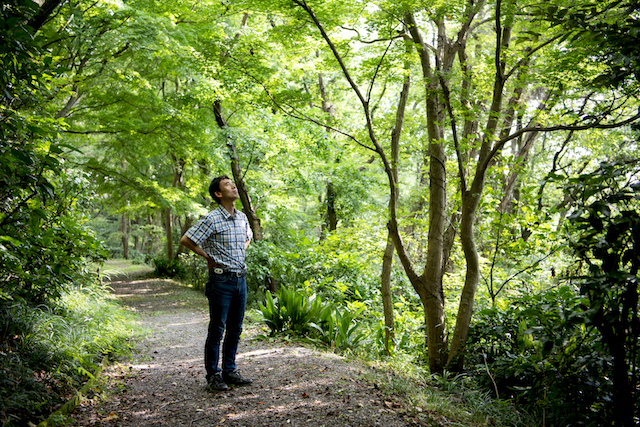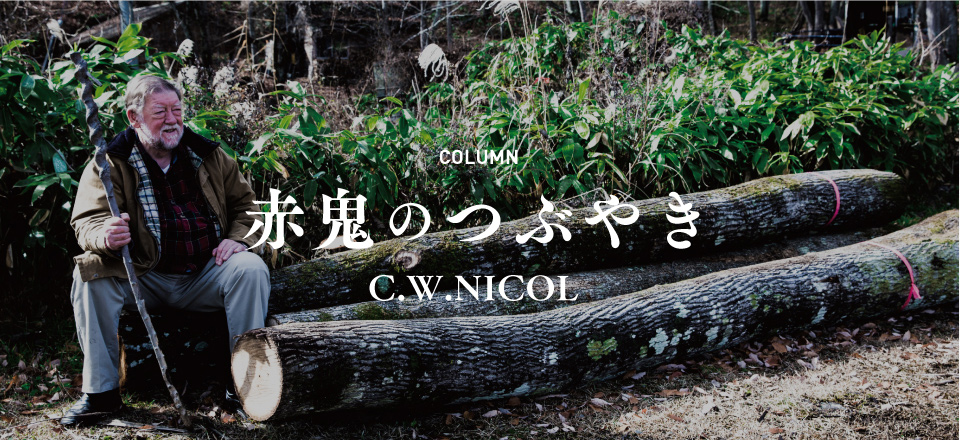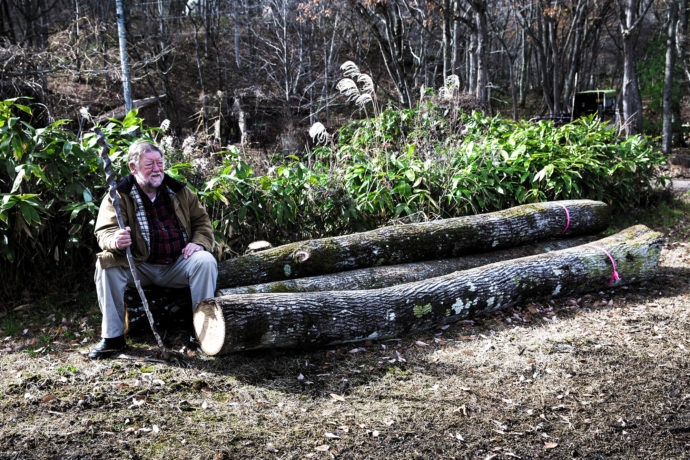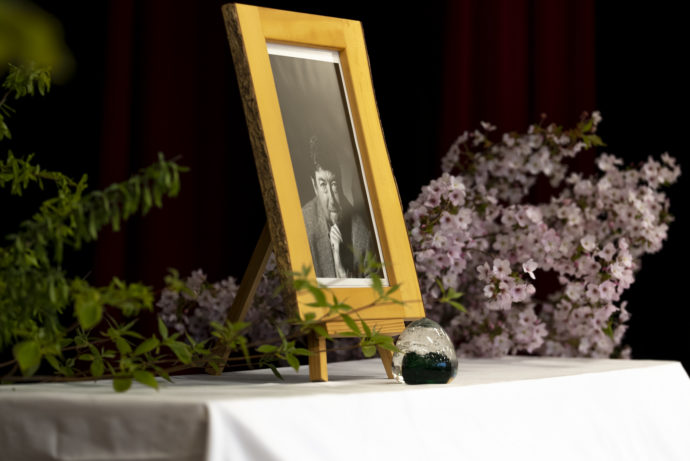Column
【赤鬼のつぶやき C.W.ニコル】 メタセコイア(METASEQUIOA)
私たちアファンの森が「一般財団法人」となった当初から、地域原産の在来種のみ植えることを方針としてきました。しかし、私自身がこの地で森林再生に取り組み始めた1986年からの16年間は、敢えて4種の外来種も植えました。愛でる楽しみや教育のため、そして歴史や文化について語り合う“きっかけ”とするために。その1つがメタセコイア、英名は‘Dawn Redwood’(日本名の「アケボノスギ」は、その直訳です)。
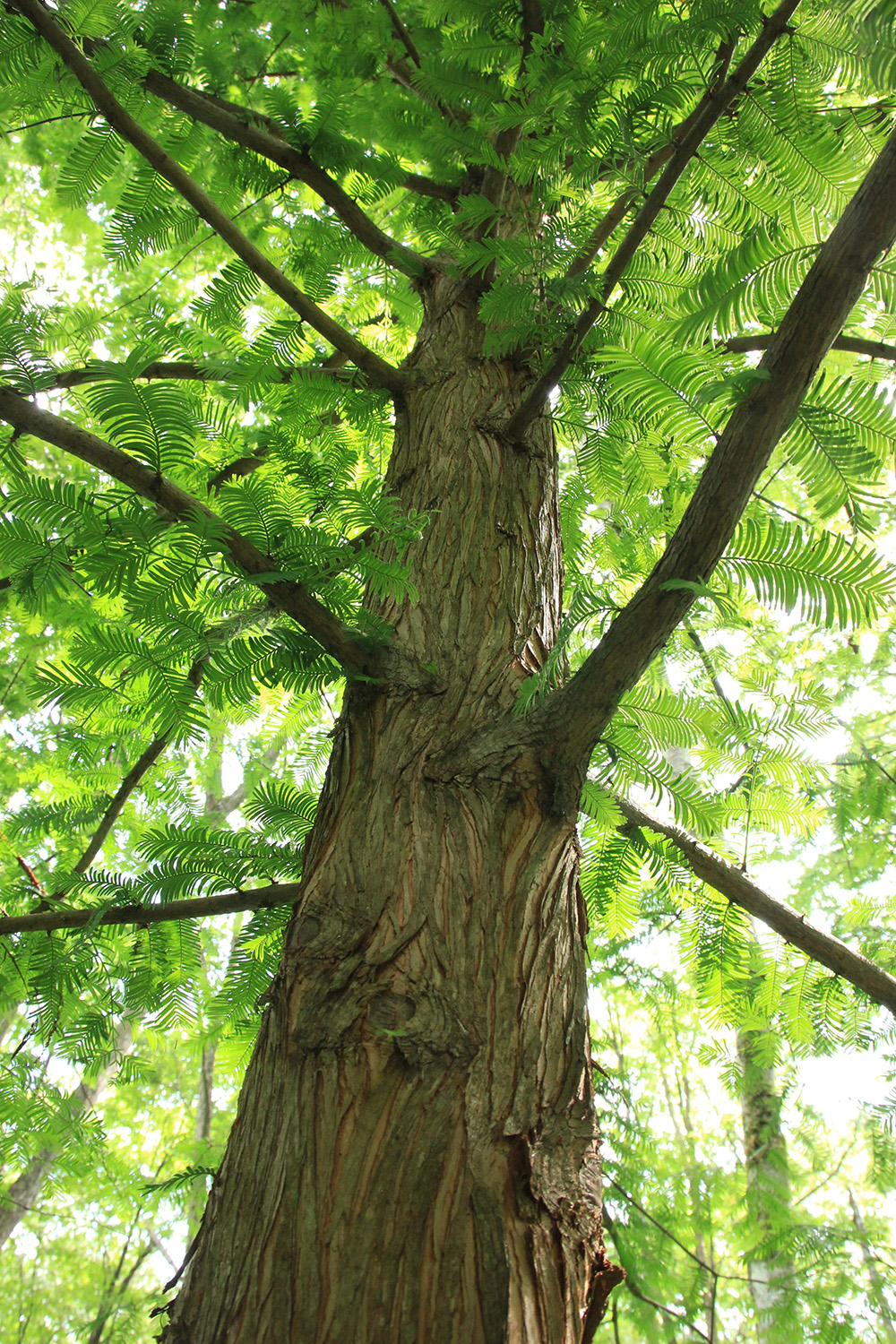
1941年、植物学者の三木茂博士によって「化石」として発見されました。つまり、数百万年前には、メタセコイアは今の日本があるこの場所に、確かに存在したというわけです。当時はすでに絶滅したと考えられていましたが、1943年、中国・湖北省利川(りせん)市で中国政府の森林管理官として現地に赴いていた植物学者のチャン・ワン(Zhan Wang)が現生種を発見、その標本を採集しました。当時は戦時中でしたので調査が進みませんでしたが、その後1948年に「ハーバード大学植物園」が中国に遠征隊を派遣し、長い間絶滅したと思われていたメタセコイアの種子を米国に持ち帰りました。遠くいにしえの時代には、メタセコイアは北半球全域に広く分布していたのです。
この発見は当時の植物学・林学の世界に大きな反響を巻き起こし、メタセコイアの種苗は米国、カナダ、英国、日本をはじめ、世界各地に分配されました。メタセコイアは針葉樹で、細長い小さな葉が葉軸の左右に羽のように並んでいます。明るく瑞々しい緑色は、やがて秋になると赤茶色になり、カラマツと同じく落葉します。球果は文字通り、小さくて丸い形をしています。

中国では、野生のメタセコイアはほぼ絶滅状態ですが、現在では厳重に保護されています。一方、日本では、野生ではないものの、街路樹や公園樹として私たちの暮らしにとけ込み、愛されるようになりました。東京でもよく見かけます。
アファンの森のメタセコイアは、ティピ(寝台も炉もある円錐型のテント)が設えてある場所へと続く小道に沿って、わずか数本植えてあるだけです。成長速度はゆっくりですが、世界には高さ50メートルに達するものもあります。

このまま歳月を重ねれば、アファンのメタセコイアも大きくなり成熟するでしょうが、分布域が広がることはないので森の生態系に影響を及ぼす恐れは全くありません。この先も、再発見時のエピソードやその後に続く国際協力の物語を、私たちに静かに語りかけてくれることでしょう。
C.W.ニコル
2019年8月
写真提供:C.W.ニコル・アファンの森財団
Ever since our Afan woods became a trust we have planted only local native Japanese trees, but in the first sixteen years, from 1986 on we planted four non-native trees for fun, education, and as topics for conversation on history and culture. One of these was the metasequoia, known in English as the ‘Dawn Redwood.’ This tree was first described by a Japanese expert, Miki Shigeru, in 1941 from fossils, so millions of years ago it had in fact been native to what is now Japan. The tree was believed to be extinct until in 1943 Zhan Wang, a Chinese forestry official, discovered it in the Lichuan county of Hubei province, China. This was during the war, so nothing much happened, but in 1948 an international expedition organized by the Arnold Arboretum of Harvard University, USA, went to China and brought back seeds of this tree that had long been thought to be extinct. In very ancient times the metasequoia tree had been common throughout the northern hemisphere.
This discovery caused great excitement in the botanical and forestry world, and the seeds sand seedlings were widely distributed, especially to America, Canada, Britain, Japan and other countries. Now it is quite common in Japan, although not in the wild.
We have just a few metasequoia trees planted on the little trail that leads up to our ‘tipi’ area. They are growing slowly, but in other parts of the world they have reached a height of fifty metres.
The metasequoia is a conifer, with small, bright and freshly green leaves. They turn reddish brown in autumn, and like larches, they fall. The cones are small and round.
These trees have become popular as ornamental trees for city roads and parks. There are lots of them in Tokyo.
They were almost exterminated in the wild in China, but apparently are now strictly protected.
Even if they grow to be big and mature in our woods here in Nagano, they will not spread so are no danger to the character of our woods, but are certainly giving us a story of rediscovery of and international co-operation.
C.W.Nicol
8.2019
C.W.ニコル
作家・1940年イギリス南ウェールズ生まれ。1995年日本国籍取得。カナダ水産調査局北極生物研究所の技官・環境局の環境問題緊急対策官やエチオピアのシミエン山岳国立公園の公園長など世界各地で環境保護活動を行い、1980年から長野県在住。1984年から荒れ果てた里山を購入し「アファンの森」と名づけ、森の再生活動を始める。2005年、その活動が認められエリザベス女王から名誉大英勲章を賜る。2011年、2016年に天皇、皇后両陛下がアファンの森をご視察された。


